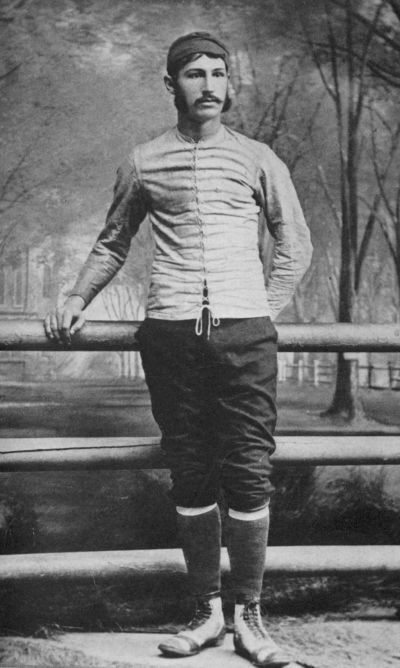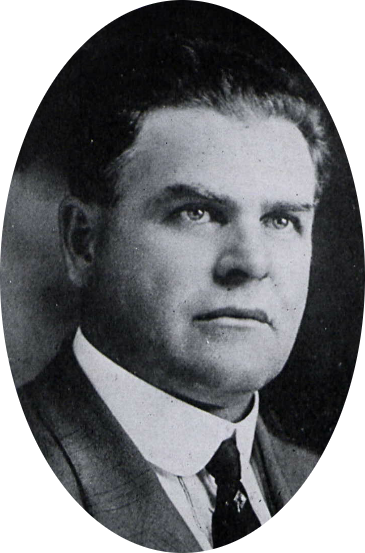|
Spinner Play
A spinner play is a rushing trick play in American football, involving a spin move and a fake hand-off. Dike Beede and Pop Warner used it, as well as Hugo Bezdek. It is best run from the single wing formation In American and Canadian football, a single-wing formation was a precursor to the modern spread or shotgun formation. The term usually connotes formations in which the snap is tossed rather than handed—formations with one wingback and a han .... References {{American football strategy American football plays ... [...More Info...] [...Related Items...] OR: [Wikipedia] [Google] [Baidu] |
Rush (gridiron Football)
Rushing is an action taken by the offense that means to advance the ball by running with it, as opposed to passing, or kicking. Running Rushing, on offense, is running with the ball when starting from behind the line of scrimmage with an intent of gaining yardage. While this usually means a running play, any offensive play that does not involve a forward pass is a rush - also called a run. It is usually done by the running back after a handoff from the quarterback, although quarterbacks and wide receivers can also rush. The quarterback will usually run when a passing play has broken down – such as when there is no receiver open to catch the ball – and there is room to run down the field. A team with a quarterback who is fast and skilled at running may regularly call intentional running plays for that quarterback, but this is rare due to the increased risk of injury. A wide receiver can act as a rusher on several kinds of plays, such as on a reverse, on an end-around, ... [...More Info...] [...Related Items...] OR: [Wikipedia] [Google] [Baidu] |
Trick Play
A trick play, also known as a gadget play, gimmick play or trickeration, is a play in gridiron football that uses deception and unorthodox tactics to fool the opposing team. A trick play is often risky, offering the potential for a large gain or a touchdown if it is successful, but with the chance of a significant loss of yards or a turnover if not. Trick plays are rarely used not only because of the riskiness, but also to maintain the element of surprise for when they are used. Trick plays take advantage of defenses' expectations and conventional wisdom, the set of basic principles to which most offenses adhere. Most offenses follow a basic set of conventions in that once the ball is snapped to the quarterback, it seldom changes hands more than once: a hand-off or pitch to a running back, or a forward pass, and the players with the best skill sets for those particular plays are the ones that will execute them. For example, the quarterback is by far the best thrower on the field ... [...More Info...] [...Related Items...] OR: [Wikipedia] [Google] [Baidu] |
American Football
American football (referred to simply as football in the United States and Canada), also known as gridiron, is a team sport played by two teams of eleven players on a rectangular field with goalposts at each end. The offense, the team with possession of the oval-shaped football, attempts to advance down the field by running with the ball or passing it, while the defense, the team without possession of the ball, aims to stop the offense's advance and to take control of the ball for themselves. The offense must advance at least ten yards in four downs or plays; if they fail, they turn over the football to the defense, but if they succeed, they are given a new set of four downs to continue the drive. Points are scored primarily by advancing the ball into the opposing team's end zone for a touchdown or kicking the ball through the opponent's goalposts for a field goal. The team with the most points at the end of a game wins. American football evolved in the United States, ... [...More Info...] [...Related Items...] OR: [Wikipedia] [Google] [Baidu] |
Juke (football Move)
A juke is a move in most forms of American football used to evade a tackler by deception, and thus without need of a stiff arm. It can also be called sidestepping. A typical juke involves a ball-carrier faking as if he will run one way, then planting his foot and running the opposite. When this is done against the flow of play, it is called a cutback Cutback or Cutbacks may refer to: * Cutback technique, a destructive technique for determining certain optical fiber transmission characteristics * Cutback (surfing move) * Cutback (roller coaster), a roller coaster inversion similar to a corkscre .... Spin move One variation on the common juke is a spin move. See also * Juking References {{Gridiron football maneuvers American football terminology ... [...More Info...] [...Related Items...] OR: [Wikipedia] [Google] [Baidu] |
Hand-off
In American football, a handoff is the act of handing the ball directly from one player to another, i. e. without it leaving the first player's hands. Most Rush (gridiron football), rushing plays on offense begin with a handoff from the quarterback to another running back. The biggest risk with any hand-off is the chance of fumble on the exchange. A hand-off can occur in any direction. A handoff does not count towards a teams points if the running back does not get sturdy in the end zone after the handoff. Sometimes called a "switch" in touch football. Alternately spelled without the hyphen; i.e., "handoff". References {{Gridiron football concepts American football terminology ... [...More Info...] [...Related Items...] OR: [Wikipedia] [Google] [Baidu] |
Dike Beede
Dwight Vincent "Dike" Beede (January 23, 1903 – December 10, 1972) was an American football player and coach. He served as the first head football coach at Westminster College in New Wilmington, Pennsylvania in 1926, Geneva College in Beaver Falls, Pennsylvania from 1934 to 1936, and Youngstown State University in Youngstown, Ohio from 1938 to 1972, compiling a career college football coaching record of 175–149–20. In 1941, he invented and introduced the penalty flag, now a common fixture of American football. Some sources spell his name "Dyke" Beede. Early life and playing career Beede was born in Youngstown, Ohio, a steel-manufacturing center located near the Pennsylvania border. He attended the city's South High School, where he was class president and played football. In his senior year, Beede received a football scholarship to Newberry College, in South Carolina. He later transferred to Pittsburgh's Carnegie Institute of Technology—now known as Carnegie Mellon Univ ... [...More Info...] [...Related Items...] OR: [Wikipedia] [Google] [Baidu] |
Pop Warner
Glenn Scobey Warner (April 5, 1871 – September 7, 1954), most commonly known as Pop Warner, was an American college football coach at various institutions who is responsible for several key aspects of the modern game. Included among his innovations are the single and double wing formations (precursors of the modern spread and shotgun formations), the three point stance and the body blocking technique. Fellow pioneer coach Amos Alonzo Stagg called Warner "one of the excellent creators". He was inducted as a coach into the College Football Hall of Fame as part of its inaugural class in 1951. He also contributed to a junior football program which became known as Pop Warner Little Scholars, a popular youth American football organization. In the early 1900s, he created a premier football program at the Carlisle Indian Industrial School—a federally-funded, off-reservation Indian boarding school. He also coached teams to four national championships: Pittsburgh in 1915, ... [...More Info...] [...Related Items...] OR: [Wikipedia] [Google] [Baidu] |
Hugo Bezdek
Hugo Francis Bezdek (April 1, 1884 – September 19, 1952) was a Czech American athlete who played American football and was a coach of football, basketball, and baseball. He was the head football coach at the University of Oregon (1906, 1913–1917), the University of Arkansas (1908–1912), Pennsylvania State University (1918–1929), and Delaware Valley College (1949). Bezdek also coached the Mare Island Marines in the 1918 Rose Bowl and the Cleveland Rams of the National Football League (NFL) in 1937 and part of the 1938 season. In addition, Bezdek coached basketball at Oregon (1906–1907, 1913–1917) and Penn State (1919), coached baseball at Arkansas (1909–1913), Oregon (1914–1917) and Penn State (1920–1930), and served as the manager of Major League Baseball's Pittsburgh Pirates (1917–1919). He was inducted into the College Football Hall of Fame as a coach in 1954. Coach Bezdek is the only Coach to bring three different teams to the Rose Bowl Game; Univers ... [...More Info...] [...Related Items...] OR: [Wikipedia] [Google] [Baidu] |
Single Wing Formation
In American and Canadian football, a single-wing formation was a precursor to the modern spread or shotgun formation. The term usually connotes formations in which the snap is tossed rather than handed—formations with one wingback and a handed snap are commonly called "wing T" or "winged T". Created by Glenn "Pop" Warner, the single wing was superior to the T formation in its ability to get an extra eligible receiver down field. History Among coaches, single-wing football denotes a formation using a long snap from center as well as a deceptive scheme that evolved from Glenn "Pop" Warner's offensive style. Traditionally, the single-wing was an offensive formation that featured a core of four backs including a tailback, a fullback, a quarterback (blocking back), and a wingback. Linemen were set "unbalanced", with two on one side of the center and four on the other. This was done by moving the off-side guard or tackle to the strong side. The single-wing was one of the first ... [...More Info...] [...Related Items...] OR: [Wikipedia] [Google] [Baidu] |



